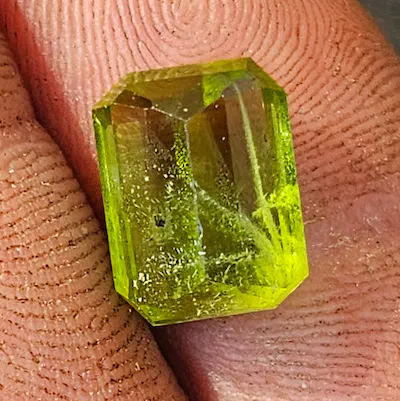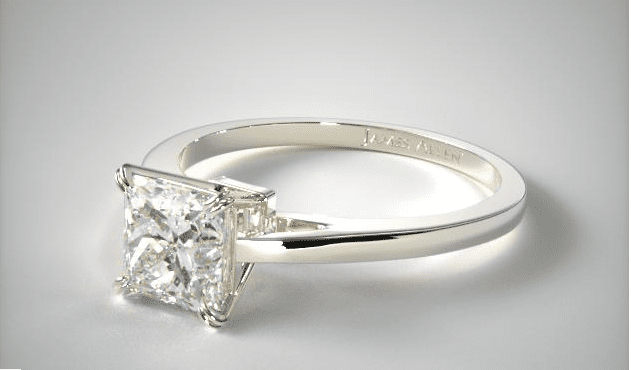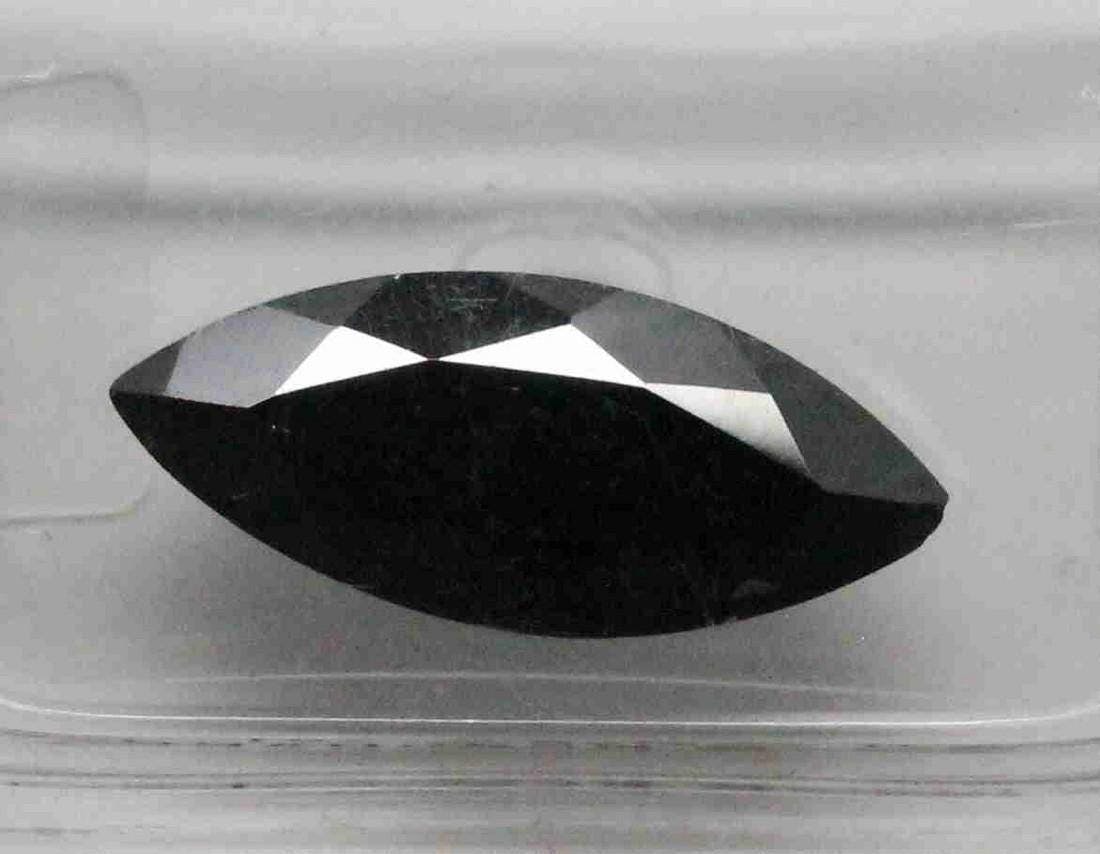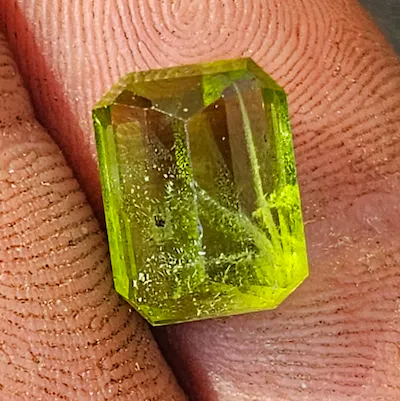News
The Width of an Engagement Ring Band: How It Affects Appearance, Durability, and Design
When it comes to engagement rings, the width of the band may not be the first thing that comes to mind. However, it plays a significant role in the overall appearance, durability, and design possibilities of the ring. On average, engagement ring bands fall between 2 and 6 mm, with 3 and 4 mm being the standard widths. The size and shape of the diamond or stone can influence the ideal band width, as can the wearer’s hand and finger size. Additionally, different metals have varying levels of durability, with stronger metals like platinum or palladium recommended for thinner bands. Whether you have a manual job, an active lifestyle, or simply want to showcase your personal style, the band width should be carefully considered. Thin bands can create the illusion of larger diamonds and complement smaller fingers, while thicker bands offer durability and can support larger stones and intricate designs. To make the best decision, it’s recommended to try on rings with different widths or view them online to find the perfect fit for you.
Factors to Consider
When choosing an engagement ring, there are several factors to consider. The width of the ring band is one such factor that can greatly impact the overall look and feel of the ring. Additionally, it can also affect the durability of the ring and the design possibilities available. Taking these factors into account will help you make an informed decision and find the perfect engagement ring for yourself or your loved one.
Appearance
The width of the engagement ring band plays a significant role in its overall appearance. A wider band tends to have a more substantial and bold look, while a narrower band appears more delicate and feminine. The choice between a wide or narrow band largely depends on personal preference and style. Consider the overall aesthetic you are trying to achieve and how the width of the band contributes to that.
Durability
The durability of an engagement ring is crucial, as it is a piece of jewelry that will be worn every day. The width of the band can impact its durability. Thicker bands are generally more durable and can withstand everyday wear and tear better than thinner bands. If the wearer has an active lifestyle or works in a job that requires manual labor, a thicker band may be a more suitable choice to ensure the ring stands the test of time.
Design Possibilities
The width of the engagement ring band also influences the design possibilities available. A wider band provides more surface area for intricate designs, engravings, or additional gemstones. It allows for more creativity and customization in the overall design of the ring. On the other hand, a narrower band may be better suited for a simple and minimalist design.
Average Engagement Ring Width
When it comes to the average engagement ring width, there is a range of widths to consider. However, the standard widths typically fall within a certain range.
Range of Width
Engagement ring widths can vary from as thin as 2 mm to as wide as 6 mm or even more. The range of widths allows for a diverse selection to suit different preferences and styles. It is important to note that these measurements are approximate and can vary based on individual preferences and the jeweler’s offerings.
Standard Widths
The standard engagement ring widths commonly fall within the range of 3 to 4 mm. These widths have become popular choices due to their versatility and balance between a delicate and substantial appearance. They are often considered the most flattering and comfortable for everyday wear.
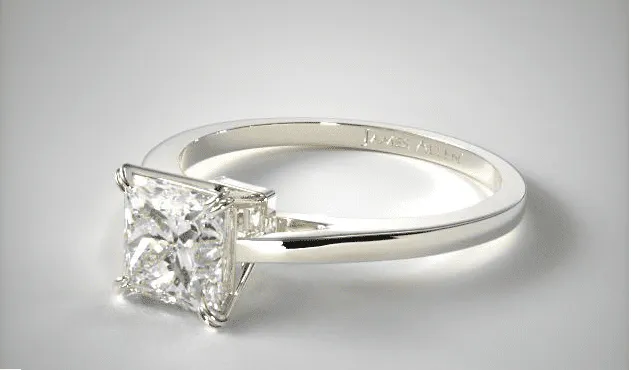
Influence of Diamond or Stone
The size and shape of the diamond or stone in the engagement ring can also influence the ideal band width. Considering these factors will help ensure that the ring looks proportionate and balanced.
Size
If you have chosen a larger diamond or stone for your engagement ring, a wider band can provide the necessary support and stability. It helps to balance the overall look of the ring and prevents it from appearing top-heavy or unbalanced. On the other hand, a smaller diamond or stone can be complemented by a narrower band, as it creates the illusion of a larger stone and draws attention to its size.
Shape
The shape of the diamond or stone can also impact the ideal band width. Certain shapes, such as round or cushion-cut diamonds, tend to look stunning with a wide range of band widths. However, more elongated shapes like marquise or pear-cut diamonds often pair well with a narrower band to create a visually balanced and elegant look.
Durability of Different Metals
When considering the durability of an engagement ring, the choice of metal is a crucial factor. Different metals have varying levels of durability and strength, which can impact the overall longevity of the ring.
Platinum
Platinum is a highly durable and dense metal often chosen for engagement rings. It is known for its exceptional strength, resistance to wear and tear, and hypoallergenic properties. When paired with a thinner band, platinum provides the necessary support and durability to withstand daily wear. Its strength makes it ideal for intricate designs and settings, as it can securely hold larger stones.
Palladium
Palladium is another metal that offers excellent durability for engagement rings. It is a member of the platinum family and shares many of its qualities, such as high strength and resistance to tarnish. Palladium is lighter than platinum, making it a popular choice for individuals looking for a more lightweight ring. Its strength allows for thinner band widths without compromising on durability.
Other Metals
Other metals commonly used for engagement rings include white gold, yellow gold, and rose gold. While these metals offer aesthetic appeal and can be more affordable compared to platinum or palladium, they may not provide the same level of durability for thinner band widths. If you prefer a thinner band and one of these metals, it is important to select a reputable jeweler who can ensure the metal is of high quality and properly reinforced to withstand everyday wear.

Consideration of Hand and Finger Size
When choosing the width of an engagement ring band, it is essential to consider the hand and finger size of the wearer. A band that is too wide or too narrow in proportion to the hand and finger can look disproportionate or unbalanced.
A larger hand and finger size can generally accommodate a wider band more comfortably. It adds proportion and presence to the overall look of the ring. However, for individuals with smaller hands and fingers, a narrower band may be more flattering and comfortable.
Visiting a jeweler and trying on rings with various widths can provide a better understanding of what looks and feels best on your hand. Ultimately, selecting a band width that complements your hand and finger size will enhance the overall aesthetic of the ring and ensure a perfect fit.
Suitability for Manual Jobs or Active Lifestyles
Engagement rings are meant to be worn every day, regardless of the wearer’s lifestyle or occupation. If you have a manual job or live an active lifestyle, it is advisable to consider the durability and practicality of the band width.
Thicker bands are generally more suitable for individuals with manual jobs or active lifestyles. They offer increased durability and are less prone to bending, warping, or damage during everyday activities. The additional strength and stability provided by a thicker band can withstand the rigors of physical work or exercise.
On the other hand, if your lifestyle is more sedentary or does not involve frequent physical activity, a thinner band may be more comfortable and aesthetically pleasing. It is important to strike a balance between durability and personal style to ensure the engagement ring remains beautiful and intact, even in the face of daily activities.

Personal Style and Preference
When selecting an engagement ring band width, personal style and preference should be taken into account. A ring is not only a symbol of commitment but also an expression of the wearer’s individuality and taste.
Consider the overall style aesthetic you prefer. Do you lean towards minimalist, classic designs, or do you gravitate towards bolder, more elaborate designs? The width of the band can greatly contribute to achieving your desired style. A wider band can provide a more statement-making look, while a narrower band can exude elegance and simplicity.
It is important to choose a band width that aligns with your personal style and feels authentic to you. Your engagement ring should reflect your unique personality and be a constant reminder of your love and commitment.
Enhancing Diamond Appearance
The width of an engagement ring band can also play a role in enhancing the appearance of the diamond or stone set in the ring. Consider these factors to maximize the visual impact of your chosen gemstone.
Making Diamonds Look Bigger
If you have selected a smaller diamond and wish to create the illusion of a larger stone, a narrower band can be beneficial. The contrast between the narrow band and the smaller diamond can make the diamond appear more prominent and visually larger. This optical illusion can be particularly appealing for individuals with petite or slender fingers.
Complementing Small Fingers
In addition to making diamonds look bigger, a thinner band can also complement small fingers. For individuals with petite hands, a wide band may overwhelm the finger and diminish the delicate proportions. Opting for a narrower band can highlight the natural beauty of the finger and allow the diamond or stone to shine without overpowering the overall look.

Supporting Larger Stones and Intricate Designs
If you have chosen a larger diamond or have a preference for intricate designs, the width of the engagement ring band becomes even more important. Consider these factors to ensure the durability and aesthetics of the ring.
Durability for Larger Stones
A wider band provides more support and stability for larger stones. The additional surface area and metal ensure that the stone is securely held in place and less susceptible to damage. If you have chosen a substantial diamond or an elaborate setting with multiple gemstones, a wider band can help maintain the structural integrity of the ring over time.
Design Possibilities
A wider band also opens up possibilities for intricate designs and embellishments. More surface area means more room for intricate engravings, detailed metalwork, or additional gemstones. If you have a specific design in mind or prefer a ring that stands out with its intricate details, a wider band can provide the canvas for these creative elements to come to life.
Consider your personal style, the desired level of intricacy, and the overall look you want to achieve when deciding on the width of the band. Balancing aesthetics, durability, and design possibilities will ensure that your engagement ring showcases your unique preferences and becomes a cherished treasure.
Finding the Right Width
Finding the right width for your engagement ring band is crucial to ensure that it not only looks beautiful but also meets your practical needs. Here are some tips to help you make an informed decision.
Try Different Thicknesses
Visiting a jewelry store and trying on rings with different band thicknesses is highly recommended. This hands-on approach allows you to see how different widths look and feel on your finger. It also gives you an opportunity to assess the overall comfort and fit of the band width.
Take note of how each width affects the appearance of the ring and how it complements your hand and finger size. Consider the proportions, balance, and overall aesthetic created by each band width. Remember that personal preference is key, as the engagement ring should be a reflection of your unique style and taste.
View Rings Online
In addition to trying on rings in person, viewing engagement rings online can provide valuable insights and help you make a decision. Online platforms and jewelry websites often showcase rings from various angles, allowing you to visualize the appearance of different band widths.
Take advantage of zoom features and detailed images offered by reputable jewelers to closely examine the details and aesthetics of each ring. Pay attention to how the width of the band enhances or detracts from the overall appeal of the ring. Online platforms also provide a wide range of options that may not be available at local jewelry stores, giving you a broader selection to choose from.
In conclusion, the width of an engagement ring band is an important factor to consider when selecting the perfect ring. It affects the appearance, durability, and design possibilities of the ring. By considering factors such as personal style, hand and finger size, and the size and shape of the diamond or stone, you can make an informed decision and find the engagement ring that perfectly reflects your love and commitment. Trying on rings with different thicknesses and viewing them online can provide valuable insights and help you find the right width for your perfect engagement ring.
